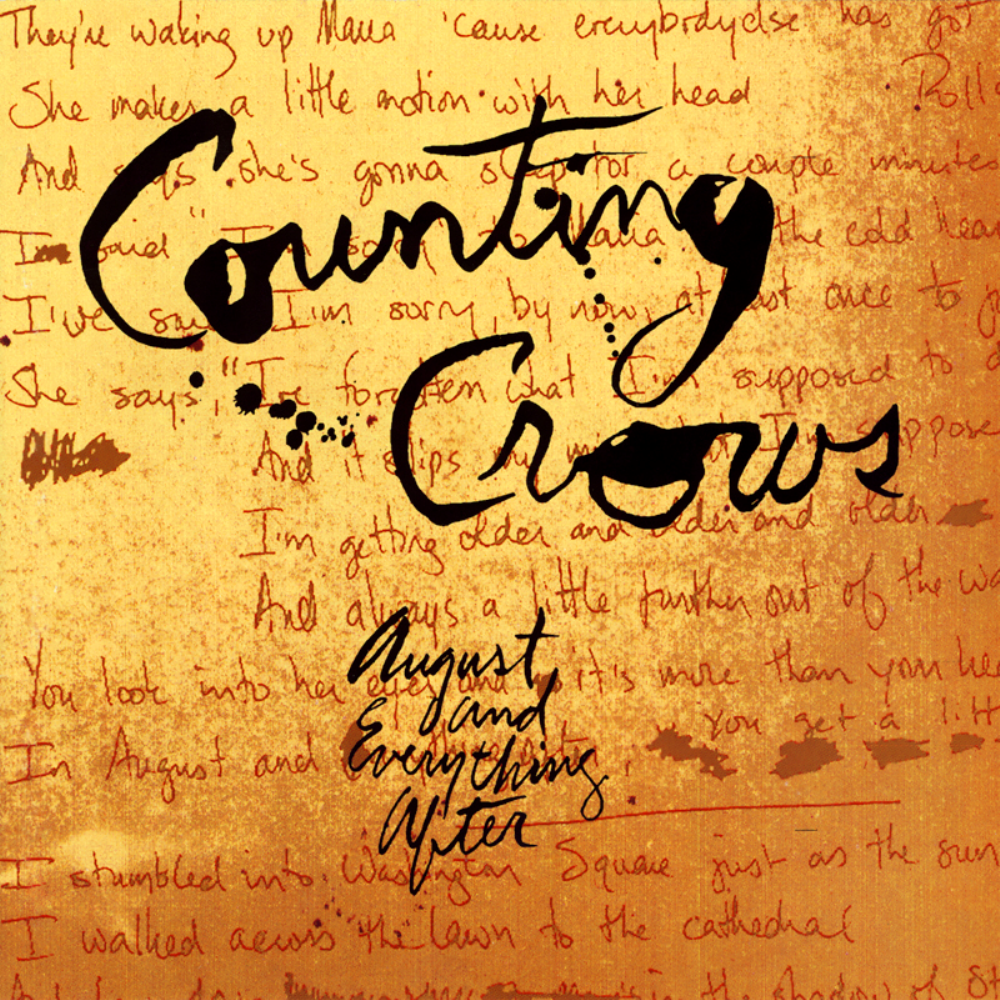To put August and Everything After into context newly elected president Bill Clinton’s America, culturally still coasting along to the homogenisation of grunge and not yet fully embracing the self-mocking humour of The Simpsons, was a place where the Cold War had ground to a relieved anti-climax and before high school shootings were the norm. Music was seemingly stagnating post-Nirvana and Rage Against The Machine, especially in the mutated nu-metal and grunge scenes they had spawned and at first glance Counting Crows looked like another rock wolf in grunge clothing, but there was something about singer and main composer Adam Duritz’s knotted dreadlocks and the joyous melancholy he sang.
Influence-wise, while the meditative organ sound borrows heavily from Born in the USA era E Street Band it would be easy to say it’s contrived or derivative but to reference Counting Crows on hearing something similar today may do it justice. A simple reimagining of the heartland rock genre into something more emotive may be more appropriate. Opening with ‘Round Here’ you could initially be forgiven for thinking August and Everything After was merely cashing in on the back of Losing My Religion and surprise breakthrough act of the same year, Blind Melon, with a similar funky but maudlin groove albeit with an added (and on trend) Eddie Vedder snarl. However, there is an authenticity to August and Everything After more akin to the gentle blues of the Black Crowes album The Southern Harmony and Musical Companion released the year before.
Some may recall the band as a one hit wonder and the temptation for many must be to head for the repeat button with Mr Jones dispensed with by the third track but it is that in itself that lets the understated brilliance of the rest of August and Everything After to radiate on repeat listens. None more so on the following ‘Perfect Blue Buildings’ and ‘Anna Remains’. The former is an ode to seeking oblivion on the road set to sorrowful mandolin and organ while the title is a crude but effective metaphor for hotels and/or the drugs often found within them. The latter is a subtle alt. country classic without an obvious chorus where the “I’m not worried, I’m not overly concerned” refrain is enough to carry the song into a kind of pulsing catatonia. If anything the inclusion of ‘Mr Jones’ is merely the big MTV cash generator. The radio friendly unit shifter, to use the parlance of the day.
Sublime may be an overused word in music writing but on ‘Time and Time Again’ the instantly catchy melodies are combined with a languid southern rock blues guitar style shared with another of that year’s completely overlooked albums, Izzy Stradlin and the Ju Ju Hounds. Sure the minor pentatonic noodling hardly tears up the rulebook but the wonderful phrasing and delivery of the chorus and, if the song even needs it, an even better middle eight, should have propelled the band into living rooms and mainstream radio studios throughout the Western world. The loose Alman Brothers/Neil Young feel to the guitars and the oddly sanguine tone of the lyrics make ‘Time and Time Again’ a tour de force in American songwriting of the era.
‘Rain King’ may mirror the theme tune to that other cultural touchstone of the 90s, Friends, but two years prior to the hit show’s arrival, ironically the writers of the hit theme, The Rembrandts, became part of the first post-August… tranche of US MOR. On the longing ‘Sullivan Street’ or the descending strains of ‘Ghost Train’ it’s as if these chord changes have never been used before and the exquisite ‘Raining in Baltimore’, another familiar standard that sounds like nothing that has happened previously. All three play on a vulnerable nostalgia not seen before in the mainstream and made possible by grunge’s great emo awakening. The album’s wider cultural affect, perhaps buoyed by the previous year’s cult teen flick Singles, can arguably be seen in the big US TV shows of the decade; Party of Five and My So Called Life, Dawson’s Creek and The OC, and so on…
Sure, it all sounds like it was recorded in the early 90s but that is because it was. At the time in the UK August and Everything After represented some sort of musical nadir between the Manchester and Britpop scenes where very little of note happened and the most successful British band were de-facto Americans Bush (cue a barrage of comments about shoegaze, NWONW and the Stourbridge scene), but its influence is visible in the broader UK scene of the mid-90s in Ocean Colour Scene, early Coldplay and the slew of post-Britpop bands aping the more American style. And, while they never really repeated the international success of August And Everything after, its real legacy will continue to be the monolithic stadium bands of the last twenty years (particularly in America) that took the Counting Crows blueprint to new levels and the tortured singer-songwriting that still proliferates today.




